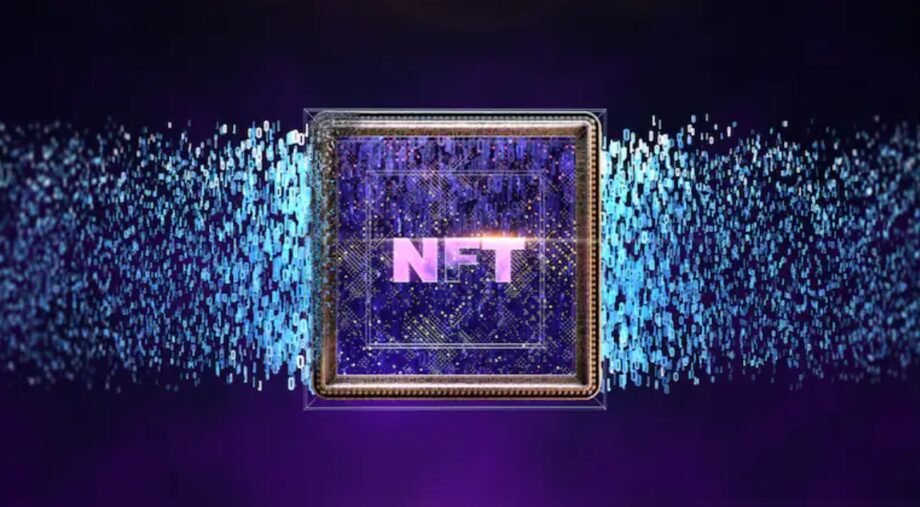The Merge is the most anticipated event in the crypto industry in years, but could the multibillion dollar non-fungible token industry become an unexpected casualty?
The expected “Merge” of the Ethereum blockchain this week could raise the risk of fraud and scams in the market for non-fungible tokens such as Bored Ape Yacht Club as analysts warn original and new versions of the tokens known as NFTs could confuse buyers.
The US$200 billion Ethereum network accounted for 70% of NFT trading activity in August, making it the world’s leading blockchain for such marketplaces run by companies like OpenSea.
However, the Merge of Ethereum to a proof-of-stake (PoS) network from a proof-of-work (PoW) will create duplicates of the NFTs from the original network, something the unscrupulous could take advantage of, Anndy Lian, author of the new book “NFT: From Zero to Hero,” told Forkast in an interview.
Scams are already prevalent in the NFT industry, which lacks oversight or regulatory protection, and any added confusion could generate more. Lian said some exchanges or marketplaces might temporarily stop transactions to address any complications or confusion that arise.
The Merge
The current Ethereum PoW network involves crypto mining companies using energy-gobbling computer farms to solve cryptographic equations that validate transactions on the blockchain, for which they are rewarded with Ether.
The shift to PoS – in which users validate transactions through “staked” ether – is expected to speed up and slash energy use on the network, which may mollify some critics who say the blockchain industry contributes to global warming.
However, Ethereum miners are less than happy as they see a business model evaporate that leaves them with redundant and expensive computer farms that cannot be repurposed. Hence, some have pledged to fork the network and create a concurrent PoW Ethereum network.
This is where the potential NFT confusion comes in. All existing NFTs on the Ethereum blockchain will be duplicated on the new PoS system, but if a PoW fork exists, the original NFTs will continue to exist on that network as well.
And this is not just hypothetical, exchanges have had to explain to users what their policy will be regarding duplicates.
Real deal
Leading NFT marketplace OpenSea, which had about four times the sales volume over the last 30 days of its nearest competitor, Magic Eden, announced it was “solely supporting NFTs on the upgraded Ethereum PoS chain.”
Competing marketplace, Rarible, has taken a different approach, saying it recognizes the authenticity of any copies of NFTs created in the same wallet address when they were held on Ethereum.
Rarible noted another potential issue, saying the aggregate number of NFT collectibles may increase, which could depress the value of collections.
“It’s impossible to predict what the actual outcome will be, but it’s highly likely that duplicate NFTs will cause confusion,” said Rarible’s chief strategy officer and co-founder Alex Salnikov in an email to Forkast. “Especially for less experienced NFT collectors.”
Déjà vu
This scenario is not without precedent in the NFT market. One of the most popular NFT collections, CryptoPunks, is actually a re-issue of the original — now known as V1 CryptoPunks — to fix a bug in their programming.
However, as V2 CryptoPunks grew to be one of the largest NFT collections, a significant market in V1 versions grew among collectors who were looking to own a piece of NFT history.
CryptoPunks creators, Larva Labs, tried to squash this secondary market using legal means, but ultimately the V1 community won out and both versions can now be traded freely.
Ultimately, Lian believes the market will follow the PoS network as it is recognized as the “official version” of Ethereum.
The upside
The good news for would-be environmentally conscious NFT investors is that PoS is estimated to be roughly 99.95% more energy efficient than PoW, according to the Ethereum Foundation.
“This may cause a new, environmentally conscious user base to adopt the technology which would in turn help drive greater mass adoption of NFT and Web3 technology,” said Rarible’s Salnikov.
“Increasing activity on Ethereum may also bring about new innovative use cases for NFT technology and drive the development of new tools designed for the growing Web3 creator economy,” he added.
That could be good news for buyers whose NFTs denominated in Ether have dropped in value against the U.S. dollar since a peak in November.
But Lian said he is skeptical about the Merge turning the current NFT bear market around.
“I think that’s very wishful thinking.”
Source: https://forkast.news/fungible-duplicates-disrupt-nft-merge/


Anndy Lian is an early blockchain adopter and experienced serial entrepreneur who is known for his work in the government sector. He is a best selling book author- “NFT: From Zero to Hero” and “Blockchain Revolution 2030”.
Currently, he is appointed as the Chief Digital Advisor at Mongolia Productivity Organization, championing national digitization. Prior to his current appointments, he was the Chairman of BigONE Exchange, a global top 30 ranked crypto spot exchange and was also the Advisory Board Member for Hyundai DAC, the blockchain arm of South Korea’s largest car manufacturer Hyundai Motor Group. Lian played a pivotal role as the Blockchain Advisor for Asian Productivity Organisation (APO), an intergovernmental organization committed to improving productivity in the Asia-Pacific region.
An avid supporter of incubating start-ups, Anndy has also been a private investor for the past eight years. With a growth investment mindset, Anndy strategically demonstrates this in the companies he chooses to be involved with. He believes that what he is doing through blockchain technology currently will revolutionise and redefine traditional businesses. He also believes that the blockchain industry has to be “redecentralised”.



